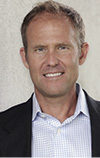In my daily work, I’m often asked to “fix” employee behavior and work habits. When I get that call, I intuitively know that I will most likely end up focusing a lot of attention on the dairy owner and not just his or her employees. Yes, employees do need training, accountability and incentives to stay on track. However, I generally find the core of most employee problems to be a lack of clear, intentional leadership.
Dairymen and women are some of the best people on earth; however, there is a tendency to expect every employee to simply have been born with the same work ethic and focus that they have. That is not the case.
So how do we help these employees to perform at their best?
First, what is the atmosphere like at your dairy? Is there positivity and a forward-thinking attitude? Or is there a sense of negativity and pessimism? Do your employees consistently do a good job and look for ways to help others? Or do they just do the bare minimum and blame others when something goes wrong? Are employees walking on eggshells, scared to make a mistake? Or are they free to fully pour themselves into their work? If any of these negative traits are present, you will have a hard time accomplishing your goals.
Second, what do high-performing employees and low-performing employees have in common? Both have someone in charge of them. Somewhere, there is an owner or a manager that is their leader. Leaders are ultimately responsible for the performance of the team. In the book Extreme Ownership, Navy SEALs Jocko Willink and Leif Babin explain this concept in great detail. They took responsibility for their team’s performance, and this made them successful in combat.
“Leaders must own everything in their world. There is no one else to blame,” Willink says.
Do your employees make excuses for poor performance? You can begin to fix this problem by addressing your own leadership. The quality of leadership sets the example for the team, and this will ultimately decide if you accomplish your goals or not. In the book, Willink says, “... one of the most fundamental and important truths of Extreme Ownership, [is] there are no bad teams, only bad leaders.”
Willink is not afraid to tell it like it is. Keep in mind that he is referring to the issue of leadership, not the person. I appreciate his approach because no one has time to sidestep important issues. To aggressively improve, we need to look aggressively at what stands in the way.
In brief, your employees need to know what they are doing, why they are doing it and where they – and the dairy – are going.
Another favorite author of mine, Donald Miller, explains in his book Story Brand the importance of clarity and simplicity when trying to get a message across to people.
“The human brain, no matter what region of the world it comes from, is drawn toward clarity and away from confusion,” Miller says.
With this concept in mind, Miller explains that he has helped several businesses triple and even quadruple their revenue when they got their messages clear. Imagine if you could improve the performance of your employees by three or four times. In my experience, the untapped potential of most dairies is enormous. The exciting reality is that you, as a leader, have the ability to access that potential. Let’s quickly look at three bullet points to make this practical.
1. What
Employees need to know very specifically what is expected of them. Do you have clearly written job descriptions for each position on your dairy? Do you have clearly written cow prep procedures and protocols for the milking parlor? Do you have a clearly defined system of rewards and consequences aligned with good and bad performance? When a new employee comes to work for you, does someone sit down with them and discuss what the job entails – according to the written job description? Do you discuss what they need to do to earn raises, gain responsibility and move up in the dairy? Do you do this in their native language?
Don’t forget, some of your Latino employees may not read, write or speak Spanish. The state of Oaxaca, Mexico, has 250 different dialects alone. You need to make sure you have things explained in their native dialect. Do you have a formal onboarding process that includes written and verbally explained expectations? The point is that you must help your employees understand exactly what you expect of them.
2. Why
Professional and engaging continuous education allows people to learn the reasons why they must do things a certain way. Why is it important to return to the first cow on every step of the prep routine? Why must they apply a post-dip? Depending on the specific job, there are specific "whys."
Why is it important to feed a certain ration to a certain pen of cows? Why do calves need colostrum right away after birth? For any person to perform well day in and day out, they need to know the "why" behind the "what" they are doing. Get your employees engaged by giving them the opportunity to learn why they do what they do, and you will see better performance out of them and reach your goals faster.
3. Where
Many Spanish-speaking employees are on your dairy because it’s simply an opportunity to make a lot more money than they can in their own countries. Many are sending money back to their country of origin; however, that demographic is changing. Each year, more and more people from Mexico and beyond are staying in the U.S. long term. Few have the same level of genuine interest in dairy farming as you do, but you can help them generate a genuine interest in their work by helping them think about where the job is taking them.
Every employee on your dairy should be encouraged to consider where they want to be in one to five years. Potentially, some of your more promising employees should be asked about their entire career trajectory. This not only will help them work with purpose, but it will also help you manage turnover. Recently, I did some training with a group of managers on a dairy in Wisconsin. All these people were leading other employees. Without a doubt, these managers were expecting me to talk about being stricter with their subordinate employees. Imagine their surprise when I handed them all a pen and paper and asked them to write down their dreams and goals! I wanted them to start thinking about goals related to their job, goals for their money, goals for their families and, ultimately, goals for their lives. Foundational to human motivation is the desire to know where a person’s work is taking them. I knew that once these managers developed a clear vision for their own lives, they would be better leaders for the dairy.
Did they need to be stricter with their employees? Probably.
Is discipline alone sufficient for motivating people? No. Not even close.
You have goals for your dairy because you know what you need to do, why you need to do it and where you want to go. Your employees need the same vision. Help them consider the what, why and where of their job, and you will more easily achieve the goals you have set for your dairy.










